
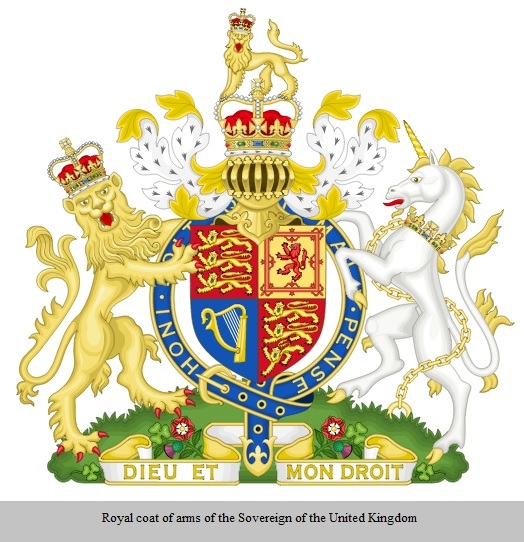
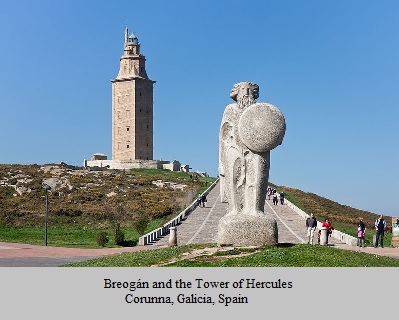
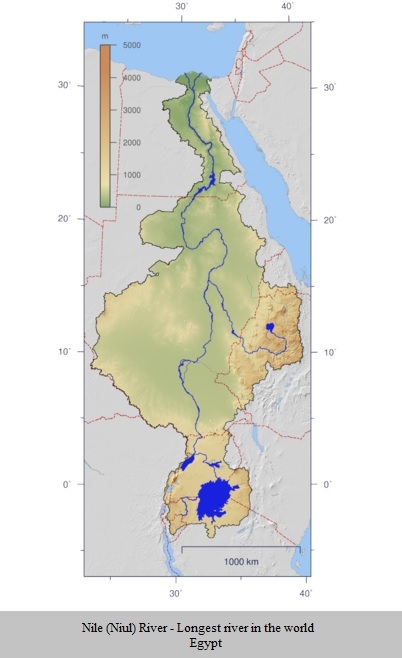
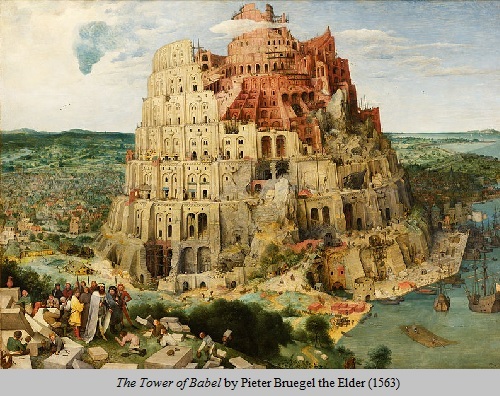

Spanish-born agnatic descendant of Niul Nemnach of Egypt, Milesius realized legendary status in Spain and Egypt during his lifetime. Beginning with his killing of three lions one morning during a sojourn through North Africa in his youth, his herculean success as a military leader gave him an almost godlike reputation with the Spanish people of his era. After he expelled barbarians and other undesirables from Iberia and Egypt, Egyptians and Spaniards simply referred to him as Míl Espáine (Hero of Spain; eponym of the word “military”). He was so beloved by Egyptian Pharaoh Nechonibus that he gave him his daughter’s hand in marriage.
But there was not to be a happy ending for Mil. In his final days, the age-old prophecy handed down to him from his ancestors drew him to a spiritual quest to seek out and conquer the “Isle of Destiny” (present-day Ireland). After his wife Scota Tephi and his brother claimed to have espied the isle from the top of the Tower of Breogan (now called the Tower of Hercules), he ordered them and his sons to sail there to reconnoiter the island. Initially well-received upon arrival after first landing on Scottish shores, his brother was later slain in Ireland by descendants of the Tuatha Dé Danann after they rightly suspected their motive for being there in the first place.
Scota (eponym of Scotland) returned to Spain with the body of her brother-in-law to find her husband had died. She returned to Ireland with her sons to exact revenge. She perished during the ensuing battle in which the Milesians defeated and eventually conquered the Tuatha Dé Danann. Her son Eber Finn was the first High King of Ireland. Her son Ir, who perished during the initial stages of the battle, is the eponym of Ireland.
Both Milesius and his wife were descendants of Akhenaton-Amenhotep IV (died 1335 BC) Pharaoh, Founder of Monotheism, and, putatively, cousins of Solomon ben David, King of Israel & Israel (1033 – 975 BCE). Interestingly, Tamata Tea Tephi, daughter of Zedekiah Ben Jechoniah, the last King of Judah, fled to Ireland to escape possible persecution of her life after Babylonian King Nebuchadnezzar conquered Judah, who killed her brothers and blinded her father, who spent the rest of his life thereafter in captivity of the Babylonians. Anyway, she could have elected instead to seek another asylum but chose Ireland.
A World Heritage Site since 2009, the Tower of Hercules is an official National Monument of Spain. There’s a legend that it was the place where Hercules slew the giant Geryon in a titanic hand-to-hand battle that lasted for three days. Afterward, he buried the giant’s skull and bones there. Centuries later Breogan, Mil’s grandfather, erected a tower over the grave to provide him with a view of the great expanse of the ocean toward the fabled Isle of Destiny. The Romans rebuilt (or built a facsimile thereof) the tower during the first century A.D. during the time of Roman Emperor Trajan.
The Milesian coat of arms represents the three lions Mil slew one morning during a sojourn through northern Africa in his youth. This is perhaps the oldest extant royal coat of arms in human history. The British Sovereign’s coat of arms is quartered by two Shields of Míl Espáine, one Harp of David, and one Shield of Scotland (which represents one of the lions).
Mil was a direct descendant of Scythian King Fóenius Farsaid mac Glúnfhind. He created the first Gaelic alphabet and language (also credited with founding Hebrew, Greek, and Latin languages by modern scholars). One of the builders of Nimrod’s Tower of Babel, he studied languages there until its collapse. His son Niul spoke 72 languages. Niul utilized his expertise to gain a ministerial position as a language interpreter and adviser to the Egyptian Pharaoh Cinqueris. He was so favored the pharaoh later gave him his daughter’s hand in marriage. He later named the Nile River after him, according to traditional Irish mythology.
One of Mil’s most famous descendants was Niall Mor Noígíallach of the Nine Hostages (380 – 454) High King of Ireland. He conquered most of Britain and western France. During one of his campaigns, he captured and enslaved a boy who was destined to become the patron saint of Ireland – viz. Saint Patrick of Ireland (389 – 461) 1st Bishop of Ireland, Patron Saint of Ireland.
According to Irish mythology, Scythian Nemedius Machta, Galamh’s and Niul’s distant cousin, reached the shores of Ireland nearly 700 years before Galamh’s wife Scota and their sons sailed there. He and 3,000 of his clan perished from the plague nine years later. Those remaining clan members spent most of the next two centuries enslaved by Formorians, a semi-divine race whom the Nemedians encountered and battled against from the time of their arrival in Ireland. Most of the Nemedians perished in a tidal wave during their uprising against the Formorians. Most of the survivors of the calamity left Ireland, according to the myth, to resettle as separate groups in either Wales or Greece. According to Nemed’s pedigree, some Nemedians remained mated with Fomorians, whose offspring later mated with Tuatha Dé Danann. Their offspring would later procreate with Galamh’s Irish High King descendants. Given this “plausible” mythological genealogy, Nemed may well be considered the very first High King of Ireland, whose agnatic descendants were likely diaspora, later identified as possibly one of the Ten Lost Tribes of Israel (House of Dan).
Richard “Strongbow” de Clare, Earl of Pembroke (1130 – 1176) Justiciar of Ireland effectively ended the Milesian dynasty’s nearly 3,000-year-old monarchy when he invaded Ireland in 1169. Irish High King Ruaidrí Ua Conchobair “Rory O’Connor” ( – 1198) was the last Irish High King of record.
U.S. Presidents George Washington, William McKinley, John F. Kennedy, and Ronald Reagan were Mil’s agnatic descendants.
Related ancestral blog articles
Agnatic Descendants of Galamh mac Bile “Míl Espáine” (1853 – 1806 BC) Father of the Irish Race
Galamh mac Bile “Míl Espáine”
Birth 853 BC in Brigantia, Corunna, Galicia, Spain
Death 906 BC in Braganza, Iberia, Spain
agnatic forebear of Niall Mor Noígíallach of the Nine Hostages (380 – 454) High King of Ireland
FAB PEDIGREE
Wiki
SOURCES
YouTube videos
GENI: Milesius Galamh King of Ireland, King of Braganza, Spain
Galicia (Spain) Wiki
“Niul” River
BIBLIOGRAPHY
The Book Of Leinster Formerly Lebar Na Núachongbála
The Courtship of Ferb: An Old Irish Romance Transcribed in the Twelfth Century Into the Book of Leinster
A genealogical history of the Milesian families of Ireland
Irish Pedigrees-The Origin of the Irish Nation: Volume One
Irish Pedigrees – The Origin of the Irish Nation – Volume 2
Irish Pedigrees – The Origin of the Irish Nation
Irish Pedigrees–The Origin of the Irish Nation: Volume Four
The Patricians, A Genealogical Study – Ebook Editions US$5.95


Steven Wood Collins (1952 – ) Antiquarian, Genealogist, Novelist
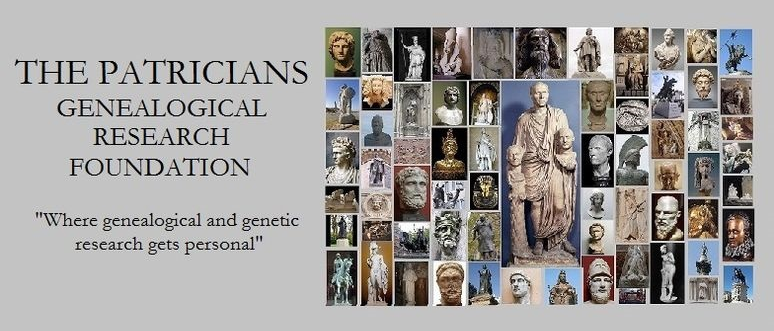

88 replies on “Galamh mac Bile “Míl Espáine” (853 – 906 BC) King of Galicia, Andalusia, Murcia, Castile and Portugal, Primogenitor of High Kings of Ireland, Father of the Irish Race”
[…] Galamh mac Bile “Míl Espáine” (1853 – 1806 BC) Father of the Irish Race 6GGF […]
LikeLike
[…] Galamh mac Bile “Míl Espáine” (1853 – 1806 BC) Father of the Irish Race 6GGF […]
LikeLike
[…] Galamh mac Bile “Míl Espáine” (1853 – 1806 BC) Father of the Irish Race 6GGF […]
LikeLike
[…] Galamh mac Bile “Míl Espáine” (1853 – 1806 BC) Father of the Irish Race 6GGF […]
LikeLike
[…] Galamh mac Bile “Míl Espáine” (1853 – 1806 BC) Father of the Irish Race 6GGF […]
LikeLike
[…] Galamh mac Bile “Míl Espáine” (1853 – 1806 BC) Father of the Irish Race 6GGF […]
LikeLike
[…] Galamh mac Bile “Míl Espáine” (1853 – 1806 BC) Father of the Irish Race 6GGF […]
LikeLike
[…] Galamh mac Bile “Míl Espáine” (1853 – 1806 BC) Father of the Irish Race 6GGF […]
LikeLike
[…] Galamh mac Bile “Míl Espáine” (1853 – 1806 BC) Father of the Irish Race 6GGF […]
LikeLike
[…] Galamh mac Bile “Míl Espáine” (1853 – 1806 BC) Father of the Irish Race 6GGF […]
LikeLike
[…] Galamh mac Bile “Míl Espáine” (1853 – 1806 BC) Father of the Irish Race 6GGF […]
LikeLike
[…] Galamh mac Bile “Míl Espáine” (1853 – 1806 BC) Father of the Irish Race 6GGF […]
LikeLike
[…] Galamh mac Bile “Míl Espáine” (1853 – 1806 BC) Father of the Irish Race 6GGF […]
LikeLike
[…] Galamh mac Bile “Míl Espáine” (1853 – 1806 BC) Father of the Irish Race 6GGF […]
LikeLike
[…] Galamh mac Bile “Míl Espáine” (1853 – 1806 BC) Father of the Irish Race 6GGF […]
LikeLike
[…] Galamh mac Bile “Míl Espáine” (1853 – 1806 BC) Father of the Irish Race 6GGF […]
LikeLike
[…] Galamh mac Bile “Míl Espáine” (1853 – 1806 BC) Father of the Irish Race 6GGF […]
LikeLike
[…] Galamh mac Bile “Míl Espáine” (1853 – 1806 BC) Father of the Irish Race 6GGF […]
LikeLike
[…] Galamh mac Bile “Míl Espáine” (1853 – 1806 BC) Father of the Irish Race 6GGF […]
LikeLike
[…] Galamh mac Bile “Míl Espáine” (1853 – 1806 BC) Father of the Irish Race 6GGF […]
LikeLike
[…] Galamh mac Bile “Míl Espáine” (1853 – 1806 BC) Father of the Irish Race 6GGF […]
LikeLike
[…] Galamh mac Bile “Míl Espáine” (1853 – 1806 BC) Father of the Irish Race 6GGF […]
LikeLike
[…] Galamh mac Bile “Míl Espáine” (1853 – 1806 BC) Father of the Irish Race 6GGF […]
LikeLike
[…] Galamh mac Bile “Míl Espáine” (1853 – 1806 BC) Father of the Irish Race 6GGF […]
LikeLike
[…] Galamh mac Bile “Míl Espáine” (1853 – 1806 BC) Father of the Irish Race 6GGF […]
LikeLike
[…] Galamh mac Bile “Míl Espáine” (1853 – 1806 BC) Father of the Irish Race 6GGF […]
LikeLike
[…] Galamh mac Bile “Míl Espáine” (1853 – 1806 BC) Father of the Irish Race 6GGF […]
LikeLike
[…] Galamh mac Bile “Míl Espáine” (1853 – 1806 BC) Father of the Irish Race 6GGF […]
LikeLike
[…] Galamh mac Bile “Míl Espáine” (1853 – 1806 BC) Father of the Irish Race 6GGF […]
LikeLike
[…] Galamh mac Bile “Míl Espáine” (1853 – 1806 BC) Father of the Irish Race 6GGF […]
LikeLike
[…] Galamh mac Bile “Míl Espáine” (1853 – 1806 BC) Father of the Irish Race 6GGF […]
LikeLike
[…] Galamh mac Bile “Míl Espáine” (1853 – 1806 BC) Father of the Irish Race 6GGF […]
LikeLike
[…] Galamh mac Bile “Míl Espáine” (1853 – 1806 BC) Father of the Irish Race 6GGF […]
LikeLike
[…] Galamh mac Bile “Míl Espáine” (1853 – 1806 BC) Father of the Irish Race 6GGF […]
LikeLike
[…] Galamh mac Bile “Míl Espáine” (1853 – 1806 BC) Father of the Irish Race 6GGF […]
LikeLike
[…] Galamh mac Bile “Míl Espáine” (1853 – 1806 BC) Father of the Irish Race 6GGF […]
LikeLike
[…] Galamh mac Bile “Míl Espáine” (1853 – 1806 BC) Father of the Irish Race 6GGF […]
LikeLike
[…] Galamh mac Bile “Míl Espáine” (1853 – 1806 BC) Father of the Irish Race 6GGF […]
LikeLike
[…] Galamh mac Bile “Míl Espáine” (1853 – 1806 BC) Father of the Irish Race 6GGF […]
LikeLike
[…] Galamh mac Bile “Míl Espáine” (1853 – 1806 BC) Father of the Irish Race 6GGF […]
LikeLike
[…] Galamh mac Bile “Míl Espáine” (1853 – 1806 BC) Father of the Irish Race 6GGF […]
LikeLike
[…] Galamh mac Bile “Míl Espáine” (1853 – 1806 BC) Father of the Irish Race 6GGF […]
LikeLike
[…] Galamh mac Bile “Míl Espáine” (1853 – 1806 BC) Father of the Irish Race 6GGF […]
LikeLike
[…] Galamh mac Bile “Míl Espáine” (1853 – 1806 BC) Father of the Irish Race 6GGF […]
LikeLike
[…] Galamh mac Bile “Míl Espáine” (1853 – 1806 BC) Father of the Irish Race 6GGF […]
LikeLike
[…] Galamh mac Bile “Míl Espáine” (1853 – 1806 BC) Father of the Irish Race 6GGF […]
LikeLike
[…] Galamh mac Bile “Míl Espáine” (1853 – 1806 BC) Father of the Irish Race 6GGF […]
LikeLike
[…] Galamh mac Bile “Míl Espáine” (1853 – 1806 BC) Father of the Irish Race 6GGF […]
LikeLike
[…] Galamh mac Bile “Míl Espáine” (1853 – 1806 BC) Father of the Irish Race 6GGF […]
LikeLike
[…] Galamh mac Bile “Míl Espáine” (1853 – 1806 BC) Father of the Irish Race 6GGF […]
LikeLike
[…] Galamh mac Bile “Míl Espáine” (1853 – 1806 BC) Father of the Irish Race 6GGF […]
LikeLike
[…] Galamh mac Bile “Míl Espáine” (1853 – 1806 BC) Father of the Irish Race 6GGF […]
LikeLike
[…] Galamh mac Bile “Míl Espáine” (1853 – 1806 BC) Father of the Irish Race 6GGF […]
LikeLike
[…] Galamh mac Bile “Míl Espáine” (1853 – 1806 BC) Father of the Irish Race 6GGF […]
LikeLike
[…] Galamh mac Bile “Míl Espáine” (1853 – 1806 BC) Father of the Irish Race 6GGF […]
LikeLike
[…] Galamh mac Bile “Míl Espáine” (1853 – 1806 BC) Father of the Irish Race 6GGF […]
LikeLike
[…] Galamh mac Bile “Míl Espáine” (1853 – 1806 BC) Father of the Irish Race 6GGF […]
LikeLike
[…] Galamh mac Bile “Míl Espáine” (1853 – 1806 BC) Father of the Irish Race 6GGF […]
LikeLike
[…] Galamh mac Bile “Míl Espáine” (1853 – 1806 BC) Father of the Irish Race 6GGF […]
LikeLike
[…] Galamh mac Bile “Míl Espáine” (1853 – 1806 BC) Father of the Irish Race 6GGF […]
LikeLike
[…] Galamh mac Bile “Míl Espáine” (1853 – 1806 BC) Father of the Irish Race 6GGF […]
LikeLike
[…] Galamh mac Bile “Míl Espáine” (1853 – 1806 BC) Father of the Irish Race 6GGF […]
LikeLike
[…] Galamh mac Bile “Míl Espáine” (1853 – 1806 BC) Father of the Irish Race 6GGF […]
LikeLike
[…] Galamh mac Bile “Míl Espáine” (1853 – 1806 BC) Father of the Irish Race 6GGF […]
LikeLike
[…] Galamh mac Bile “Míl Espáine” (1853 – 1806 BC) Father of the Irish Race 6GGF […]
LikeLike
[…] Galamh mac Bile “Míl Espáine” (1853 – 1806 BC) Father of the Irish Race 6GGF […]
LikeLike
[…] Galamh mac Bile “Míl Espáine” (1853 – 1806 BC) Father of the Irish Race 6GGF […]
LikeLike
[…] Galamh mac Bile “Míl Espáine” (1853 – 1806 BC) Father of the Irish Race 6GGF […]
LikeLike
[…] Galamh mac Bile “Míl Espáine” (1853 – 1806 BC) Father of the Irish Race 6GGF […]
LikeLike
[…] Galamh mac Bile “Míl Espáine” (1853 – 1806 BC) Father of the Irish Race 6GGF […]
LikeLike
[…] Galamh mac Bile “Míl Espáine” (1853 – 1806 BC) Father of the Irish Race 6GGF […]
LikeLike
[…] Galamh mac Bile “Míl Espáine” (1853 – 1806 BC) Father of the Irish Race 6GGF […]
LikeLike
[…] Galamh mac Bile “Míl Espáine” (1853 – 1806 BC) Father of the Irish Race […]
LikeLike
[…] Galamh mac Bile “Míl Espáine” (1853 – 1806 BC) Father of the Irish Race 6GGF agnatic […]
LikeLike
[…] descendant of Galamh mac Bile “Míl Espáine” (1853 – 1806 BC) Father of the Irish Race , agnatic cousin of Niall Mor Noígíallach of the Nine Hostages (380 – […]
LikeLike
[…] Galamh mac Bile “Míl Espáine” (1853 – 1806 BC) Father of the Irish Race 6GGF d […]
LikeLike
[…] Galamh mac Bile “Míl Espáine” (1853 – 1806 BC) Father of the Irish Race […]
LikeLike
[…] Galamh mac Bile “Míl Espáine” (1853 – 1806 BC) Father of the Irish Race […]
LikeLike
[…] Galamh mac Bile “Míl Espáine” (1853 – 1806 BC) Father of the Irish Race […]
LikeLike
[…] Galamh mac Bile “Míl Espáine” (1853 – 1806 BC) Father of the Irish Race […]
LikeLike
[…] Galamh mac Bile “Míl Espáine” (1853 – 1806 BC) Father of the Irish Race […]
LikeLike
[…] Galamh mac Bile “Míl Espáine” (1853 – 1806 BC) Father of the Irish Race […]
LikeLike
[…] Galamh mac Bile “Míl Espáine” (1853 – 1806 BC) Father of the Irish Race […]
LikeLike
[…] Galamh mac Bile “Míl Espáine” (1853 – 1806 BC) Father of the Irish Race […]
LikeLike
[…] Galamh mac Bile “Míl Espáine” (1853 – 1806 BC) Primogenitor of High Kings of Ire… […]
LikeLike
[…] was purportedly established in Britain at the outset or sometime thereafter with the advent of the Irish High King dynasty two millenia before). Thus, the Tudor king likely had no qualms whatsoever about breaking off with […]
LikeLike
[…] Cousin of St Columba – Author’s 28th, 29th, 30th, 31st & 33rd Great-Grandfather Galamh mac Bile “Míl Espáine” (1853 – 1806 BC) King of Galicia, Andalusia, Murci… Mac Bethad mac Findlaích (ca. 1031 – 1057) King of Scotland, Eponym of […]
LikeLike
[…] Galamh mac Bile “Míl Espáine” (1853 – 1806 BC) Primogenitor of High Kings of Ire… […]
LikeLike